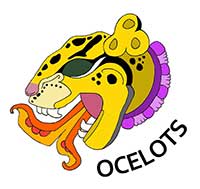Resources
A rainforest with a gold chain? The impacts of gold mining on the trophic web of an Amazonian rainforest of SE Peru
Author(s): Ursula Valdez1, Roxana P. Arauco2, Jacqueline Gerson3
1. University of Washington Bothell 2. Independent 3. Michigan State University
4352 total view(s), 124 download(s)
- Gala
Madre De Dios_Valdez.jpeg(JPEG)
- License terms
Description
Overview
In this module, students will learn about the incorporation and bioaccumulation of mercury in terrestrial and aquatic food webs in Amazonian rainforest. Mercury is used by Artisanal and small-scale goldmining (ASGM) activities in Madre de Dios, Peru and then discarded in rivers or released via burning in the atmosphere.
Available data on mercury deposition in vegetation in this region, will be used for an exercise in which students can visualize and compare the mercury deposition in areas near ASMG vs areas farther away.
Students will also review study cases, and local and international reports about how ASGM influences human communities via the pollution of water and food, labor exploitation, sex traffic and other detrimental consequences, but how also this is a main economic activity in the region.
Students will engage in discussions about these difficult compromises that people and ecosystems of this region are facing. As an action component, students are encouraged to discuss their own role in the consumption of gold, and what to do to minimize the impacts of ASGM.
Have you ever thought about how the extraction of gold could have implications in the energy flow of an Amazonian rainforest ecosystem?
Do you know how you could be part of this chain even if you are not in the rainforest?
Gold mining is one of the most pervasive activities in the Amazonian Rainforest of SE Peru, especially along the Madre de Dios river. Rainforests of this region are considered among the most biodiverse and complex ecosystems in the world, holding records for species of birds, mammals, insects, and species of woody and herbaceous plants, and providing many ecosystem services, at the local, regional and global level. This region is well known as well for its rich indigenous culture. Gold mining extraction in the Peruvian Amazon has been happening for decades. The activity, which in great part is informal and illegal, has detrimental impacts on rainforest habitat & biodiversity loss. Most importantly, gold mining in this region has largely relied on the use of mercury as a vehicle to capture gold particles that are within river sediments. Because of this chemical process, mercury has entered the aquatic and terrestrial ecosystems’ trophic chain. In this module, we will review the concepts of bioaccumulation and biomagnification and the impacts that they can have in ecosystems. Students will learn in more detail some of the ways in which mercury bioaccumulates in some species of the Amazonian rainforest of SE Peru because of artisanal gold mining in the region. Learning about the environmental impacts of gold mining in this region will also give us the opportunity to connect this issue to the health, economy, and social systems of the human population of this region.
Learning Objectives:
- Understand the ecological processes involved in bioaccumulation of mercury in Amazonian rainforest of SE Peru.
- Understand the ecological processes involved in the flow of mercury from riparian to terrestrial rainforest trophic chains
- Improve analytical skills, and the ability to reason quantitatively and interpret visual representation of data on mercury bioaccumulation/biomagnification in rainforest organisms
- Assess and summarize primary research literature, and participate in engaged and informed discussions of the topics covered in this module (A paper with discussion questions will be provided)
- Gain an understanding of the reciprocal connections between humans and the environment and the socio-economic-health implications of these interactions
- Develop and practice skills for collaboration and teamwork
Support was provided by: A grant from the United States National Science Foundation (DBI-RCN-UBE 2120141).
Cite this work
Researchers should cite this work as follows:
- Valdez, U., Arauco, R. P., Gerson, J. (2023). A rainforest with a gold chain? The impacts of gold mining on the trophic web of an Amazonian rainforest of SE Peru. OCELOTS Incubator: Creating an online module in tropical biology, QUBES Educational Resources. doi:10.25334/WX7J-7N60
